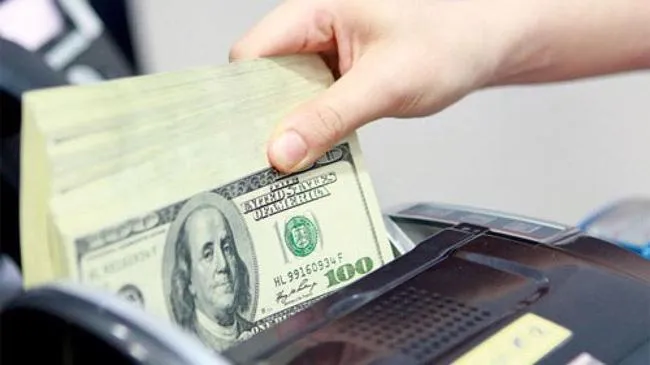
Consequently, Vietnam deviated from the global trend of increasing interest rates, particularly set by the Fed, leading to a decline in foreign capital inflows to the stock market. This resulted in challenges for both foreign and domestic ETFs to raise fresh capital, with some experiencing net withdrawals, and foreign investors consistently engaging in daily market sell-offs.
Waiting for a true reversal
In the latter part of July, there were signs of improved foreign capital inflows into the stock market. According to HoSE statistics, foreign investors registered two consecutive weeks of net buying, totaling around VND 2,040 billion. While this constitutes a significant influx of capital and could be seen as an indication of a reversal, it remains uncertain whether the trend of net selling has genuinely turned around.
Firstly, the robust growth of the Vietnamese stock market in July (with the VN-Index rising by 9.2%, marking the highest monthly increase since February 2021) not only motivated local investors but also captured the attention of foreign investors. Looking at the day-to-day transactions of foreign investors, a cycle of 3-5 trading sessions alternated between net selling and net buying, primarily indicative of short-term speculative activities.
Secondly, despite the net buying of VND 2,040 billion during the last two weeks of July, this does not alter the fact that foreign investors still hold a position of capital withdrawal, stemming from the time when domestic interest rates began to decrease. Specifically, from March 15 to August 9, foreign investors net sold approximately VND 6,240 billion on HoSE, of which stocks worth VND 5,342 billion were net sold.
Thirdly, the short-term uptrend observed from May to August is not necessarily a sustainable market trajectory. During a corrective phase, short-term capital flows can rapidly change, reflecting speculative behavior. Therefore, it is crucial to assess foreign investors' trading patterns over a sufficiently extended market period, encompassing both upswings and corrections, as purchasing during a market downturn could prove advantageous.
Fourthly, the volume of money involved in market transactions represents just one facet of foreign capital inflows. Active investment funds, for instance, tend to allocate capital to a specific market during stable periods, even though they can flexibly shift positions from stocks to cash or from VND to USD to optimize their strategies based on market conditions. In contrast, indirect capital flows through ETFs provide a clearer gauge of a market's appeal. However, the signal from this group of funds is not entirely straightforward.
From the beginning of May 2023 until now, ETFs linked to cross-border capital flows have struggled to secure new capital, and some have even experienced withdrawals. Specifically, the VanEck Vietnam ETF faced a significant net withdrawal of VND 350.4 billion – according to FiinTrade data, the Xtrackers FTSE Vietnam Swap ETF saw a minor addition of VND 2.5 billion, while the iShares MSCI Frontier and Select EM ETF recorded a net withdrawal of VND 489.2 billion. These three funds represent European capital flows.
In contrast, funds representing Asian capital flows have also experienced withdrawals: the Fubon fund (mainly from Taiwan) witnessed a net withdrawal of VND 228.2 billion, the VFM Diamond fund saw a net withdrawal of VND 185.1 billion, and the VFM VN30 fund had a net withdrawal of VND 561.1 billion. The latter two funds primarily involve Thai capital.
Interest rate pressures
The strengthening net selling activity by foreign investors coincided with the decision to initiate the process of reducing domestic interest rates. While both Vietnam and the Fed were slow to adjust interest rates by the end of March 2023, their trends remained in opposition. A rise in USD interest rates theoretically bolsters the currency's value, which subsequently impacts international investment flows.
However, the pressure to increase the domestic exchange rate isn't substantial enough to necessarily cause a reversal in foreign capital flows. Many forecasts from domestic and foreign analytical organizations estimate that even if the SBV implements another interest rate cut in the third quarter of 2023, the devaluation of VND against USD won't surpass 2% compared to the beginning of 2023. Several factors support the exchange rate, such as a healthy trade surplus, ample FDI and remittances, and a positive real savings interest rate. Nevertheless, attracting new investment flows is a separate challenge altogether.
The most immediate factor remains the divergence in interest rate trends between Vietnam and other countries, particularly the Fed. While the Fed is anticipated to raise interest rates once more in September, the subsequent steps and potential duration of maintaining high-interest rates remain unclear. Conversely, could Vietnam only afford one more interest rate cut? If the Fed ceases its hikes and provides clearer signals about a potential rate reversal, international investment flows may resume their activity. In essence, a clear and positive resolution of the interest rate story is highly likely to prompt the return of new foreign capital.




















